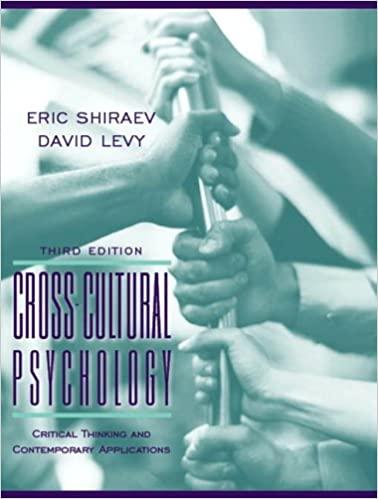Question
1) Suppose we were interested in exploring the relationship between loneliness and depression as were Quellet and Joshi (1986). I obtain 5 participants and measure
1) Suppose we were interested in exploring the relationship between loneliness and depression as were Quellet and Joshi (1986). I obtain 5 participants and measure both their loneliness scores (designated variable X) and their depression scores (designated Y). The results are presented below: Higher scores represent higher levels of the measure.
Calculater for the data below. Your correlation should round to a 10th decimal place (e.g.,r = 0.10,r =0.20,r = 0.30, etc...)
| Loneliness (X) | Depression (Y) |
| 4 | 16 |
| 27 | 34 |
| 18 | 33 |
| 7 | 23 |
| 31 | 26 |
2) Carroll and Shmidt (1992) hypothesized that having a good sense of humor may be related to good physical health. Sense of humor is measured using the Situation Humor Response Questionnaire (Martin & Lefcourt, 1984). Physical health is measured by having participants fill out a self-report inventory on health problems. Scores are represented below - Higher scores represent higher levels of the measure.
Calculate the slope (b1) for the data below. Your answer should round to the nearest 10th decimal (e.g., b1 = 0.10, b1 = 0.20, b1 = 0.30, etc...) Remember, that b1can be negative.
(hint: retain as many decimals as possible while doing your calculations to ensure that rounding error doesn't bias your final value)
| Humor (X) | Health (Y) |
| 36 | 9 |
| 68 | 18 |
| 61 | 16 |
| 51 | 17 |
| 35 | 8 |
Step by Step Solution
There are 3 Steps involved in it
Step: 1

Get Instant Access to Expert-Tailored Solutions
See step-by-step solutions with expert insights and AI powered tools for academic success
Step: 2

Step: 3

Ace Your Homework with AI
Get the answers you need in no time with our AI-driven, step-by-step assistance
Get Started


